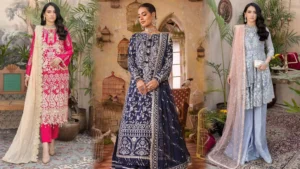The Rise of 99-Based Clothing: Fashion for a Sustainable Future

When you hear the term “99-Based Clothing,” does it spark curiosity? This innovative trend is redefining the fashion industry by blending affordability, inclusivity, and sustainability into one game-changing concept. More than just another buzzword, 99-Based Clothing reflects a growing movement towards thoughtfully produced garments that cater to eco-conscious consumers while remaining accessible to everyone.
But why is this movement gaining so much traction? What sets 99-Based Clothing apart from other sustainable fashion initiatives? This article explores the rise of 99-Based Clothing and its potential to play a leading role in shaping a sustainable future for fashion. From its environmental impact to the brands paving the way, here’s everything you need to know about this exciting trend.
What is 99-Based Clothing?
At its core, 99-Based Clothing is a concept of creating stylish, sustainable apparel priced at or near $99. The idea strikes a balance between affordability and quality, making eco-friendly clothing accessible to a larger audience. By anchoring their pricing around this symbolic figure, 99-Based Clothing brands aim to dispel the stereotype that sustainable fashion is only for the elite.
This approach marks a departure from luxury-dominated sustainable fashion. Instead of focusing solely on exclusivity, 99-Based Clothing emphasizes inclusivity, affordability, and transparency. With fast fashion increasingly scrutinized for its detrimental effects on the planet and workers, this middle ground offers a refreshing alternative.
The Environmental Impact of 99-Based Clothing
Fashion is one of the most polluting industries in the world. According to the World Bank, the fashion sector contributes to approximately 10% of carbon emissions and accounts for 20% of wastewater worldwide. The advent of 99-Based Clothing addresses some of these critical issues by adopting more sustainable practices, such as:
1. Reducing Water Usage
Traditional garment manufacturing is notoriously water-intensive. For example, producing a single cotton T-shirt requires around 2,700 liters of water—that’s nearly what one person drinks in two and a half years! 99-Based Clothing brands are investing in alternative fabrics, like organic cotton and recycled materials, which use significantly less water during production.
2. Minimizing Energy Consumption
Many 99-Based brands are switching to energy-efficient machinery and renewable energy sources in their factories. Others adopt low-impact production methods, such as dyeing clothing with natural pigments or eliminating unnecessary steps in the process altogether.
3. Decreasing Textile Waste
The fashion industry discards mountains of unused fabric every year, contributing to rising landfills. 99-Based brands counter this by repurposing leftover fabrics, upcycling materials, and designing garments engineered for longevity.
By focusing on these environmentally friendly practices, 99-Based Clothing brands are laying the foundation for a circular fashion economy—one that minimizes waste and maximizes resource use.
Fashion for All: Affordable and Inclusive
Sustainable fashion has long been criticized for its exclusivity, with many questioning why eco-friendly options are priced out of reach for everyday consumers. 99-Based Clothing aims to democratize sustainable fashion, demonstrating that high-quality, thoughtfully made garments can also be accessible.
Affordability Without Compromise
By maintaining a price point near $99, these brands strike a perfect compromise between affordability and quality. Shoppers no longer have to choose between a low-cost fast-fashion item and an overpriced sustainable piece. Instead, they can confidently invest in a garment designed to last.
Inclusivity in Design
Another hallmark of 99-Based Clothing is its commitment to inclusivity. These brands often focus on producing gender-neutral clothing, diverse sizing options, and styles that cater to a variety of preferences and body types. This ensures that sustainable fashion is available to everyone—not just a small, privileged segment of society.
Brands Leading the Way in 99-Based Clothing
Some pioneering brands have already embraced the 99-Based Clothing model. Here are a few making significant waves:
1. Everlane
Known for its “Radical Transparency,” Everlane embodies the ethos of 99-Based Clothing. The brand focuses on ethical production, provides detailed cost breakdowns of each item, and offers many wardrobe staples priced near $99.
2. Pact
Pact specializes in affordable, organic basics—everything from T-shirts to underwear. Their commitment to fair trade, sustainable materials, and competitive pricing make them a champion of accessible eco-fashion.
3. Nisolo
Nisolo’s footwear showcases how sustainability and stunning craftsmanship can align beautifully. While their shoes hover around the $99 mark, their ethical practices make every purchase worthwhile.
4. Tentree
Why stop at clothing? Tentree also plants trees for every product sold, showing how 99-Based brands can go above and beyond to prioritize environmental conservation.
These brands are not just selling clothes; they are challenging the status quo of the fashion industry while proving that affordability, style, and sustainability can coexist.
Consumer Trends and the Future of Fashion
The increasing popularity of 99 based zipper is tied to one undeniable fact—consumer preferences are evolving. Today’s shoppers care more about where their clothes come from, how they’re made, and the impact these processes have on the world. According to Nielsen, 73% of consumers say they’d change their buying habits to reduce their environmental impact. With these shifts in priorities, the future of 99-Based Clothing looks bright.
Should We Expect Mainstream Adoption?
Although still emerging, 99-Based Clothing has potential for mainstream adoption. With more brands aligning with this model and younger generations prioritizing sustainable choices, the gap between fast fashion and high-end eco-luxury is closing rapidly. Large retailers are even beginning to mimic the 99-Based approach in response to increasing demand for affordable sustainability.
Consumer Education Will Be Key
For 99-Based Clothing to achieve its full potential, it’s crucial to raise awareness among consumers. Brands must better communicate their values, explain their processes, and highlight the long-term cost advantages of choosing sustainable clothing overall. Additionally, partnerships with influencers, educational campaigns, and certifications will help consumers differentiate between genuine eco-friendly brands and greenwashing attempts.
Why 99-Based Clothing Deserves Your Support
When we think of sustainable fashion, it’s easy to default to luxury pricing or dismiss the idea as inaccessible. However, 99-Based Clothing bridges the gap. By offering stylish, thoughtfully made pieces at an affordable price, it allows more people to participate in building a better future for fashion—and our planet.
As consumers, we can play a critical role in accelerating this movement. The next time you shop, prioritize 99-Based brands and choose pieces you’ll love and cherish for years to come.
Together, we can challenge the status quo of fashion, redefine sustainability, and make the $99 price tag one of the most significant benchmarks in sustainable living.







